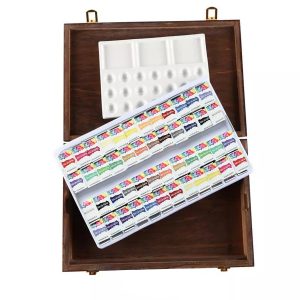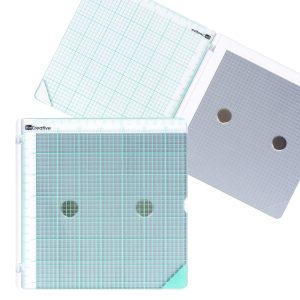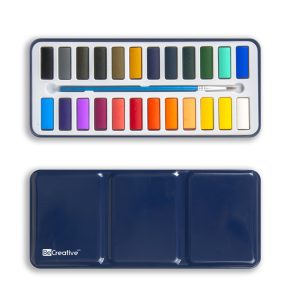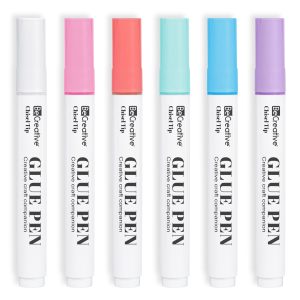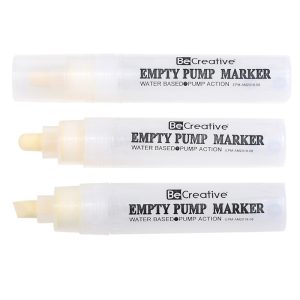To remove watercolor ink from clothing, apply dish soap and cold water, use rubbing alcohol or a vinegar solution, and try salt or baking soda for absorption.
Understanding Watercolor Ink Stains
Watercolor ink stains on clothing can be a daunting challenge to remove. This is due to the unique properties and composition of watercolor inks, which differ significantly from other types of ink.

Types of Watercolor Inks
Traditional Watercolor Inks: Made from natural pigments and a water-soluble binder, these inks are known for their delicate and translucent qualities. They are popular in artistic applications but can be difficult to remove from fabric once dry.
Modern Synthetic Inks: These inks contain synthetic dyes or pigments and offer a wider range of bright, vivid colors. While they provide excellent color saturation, synthetic inks can penetrate fabrics more deeply, making stains harder to eliminate.
Why Watercolor Stains Are Challenging to Remove
Pigment Penetration: Watercolor inks, especially synthetic ones, are designed to be highly penetrative to provide lasting color on paper. Unfortunately, this characteristic also means they can deeply embed into fabric fibers, complicating stain removal.
Color Fastness: Many watercolor inks possess a high degree of color fastness, intended to resist fading over time. While beneficial for artwork longevity, this feature can be a detriment when it comes to stain treatment, as the colorants are resistant to fading even under rigorous cleaning.
Variability of Fabric Types: Different fabrics react uniquely to watercolor stains. Natural fibers like cotton and linen may absorb and hold onto the pigment more stubbornly than synthetic fibers, which can sometimes allow for easier stain release but also risk spreading the stain if not treated correctly.
Immediate Actions to Take After Staining
When you encounter a fresh stain, quick and effective actions are crucial to prevent the stain from setting in. Here are detailed steps on how to manage a stain immediately after it happens, focusing on blotting techniques and pre-treating with cold water.
Blotting the Stain: Do’s and Don’ts
Do immediately blot the stain with a clean, dry cloth or paper towel. Press down firmly to absorb as much of the spill as possible. Do not rub the stain, as this can work it deeper into the fabric, making it more challenging to remove.
Do: Use a white cloth or paper towel to avoid transferring any dye onto the stained fabric.
Don’t: Wait to start blotting. The quicker you act, the less time the stain has to set.
Pre-Treating the Stain with Cold Water
Pre-treating the stain with cold water can be highly effective, especially for protein-based stains like blood or milk. Pour cold water directly onto the stain from the backside to push the stain out of the fabric rather than through it.
Do: Apply cold water gently and blot in between to check progress.
Don’t: Use hot water, as it can set certain stains, making them nearly impossible to remove.
Home Remedies for Removing Watercolor Ink
Removing watercolor ink stains from clothing can seem daunting, but several home remedies can be effective. These methods utilize common household items, making them accessible and cost-effective solutions.
Using Dish Soap and Cold Water
Procedure: Mix a few drops of mild dish soap with cold water. Apply this mixture directly to the stain and gently rub it with your fingers or a soft brush. Rinse thoroughly with cold water.
Effectiveness: Dish soap is designed to break down grease and can also loosen the pigments from watercolor inks, making it easier to wash them out. This method works best on fresh stains.
Applying Rubbing Alcohol or Vinegar Solution
Rubbing Alcohol: Dab rubbing alcohol onto the stain with a cotton ball or pad, then blot until the ink begins to lift. Rinse with cold water.
Vinegar Solution: Mix one part white vinegar with two parts cold water. Apply this solution to the stain and let it sit for 10-15 minutes before rinsing.
Effectiveness: Rubbing alcohol can break down the ink’s pigments, while vinegar’s acidity helps to dissolve them. Both methods are effective on fresh and slightly set stains.
The Role of Salt or Baking Soda in Stain Removal
Salt Method: Sprinkle table salt generously over the wet stain, let it absorb the ink for a few hours, then brush it off and rinse.
Baking Soda Method: Make a paste of baking soda and water, apply to the stain, let it sit for 15-20 minutes, then rinse off.
Effectiveness: Salt and baking soda act as mild abrasives and absorbents, pulling the pigment out of the fabric. These methods are particularly useful for absorbing excess liquid from fresh stains before further treatment.
Advanced Cleaning Techniques for Tackling Tough Stains
Dealing with tough stains requires more than just the conventional cleaning methods. By employing advanced cleaning techniques such as enzyme-based laundry detergents and using oxygen bleach, you can tackle stubborn stains effectively. Here’s how these methods work and when to use them.

Enzyme-Based Laundry Detergents: How They Work
Enzyme-based laundry detergents contain specific proteins that break down common stain molecules such as oils, fats, and proteins, making them easier to remove during the washing process.
Do: Use enzyme-based detergents on biological stains such as blood, sweat, or food. These detergents are particularly effective because they target the molecular structure of the stain, breaking it down into smaller pieces that are more soluble in water.
Don’t: Apply enzyme detergents on delicate fabrics without checking the care label. While highly effective, these enzymes can sometimes damage fabrics like wool or silk.
Using Oxygen Bleach for Stubborn Stains
Oxygen bleach, a safe and environmentally friendly alternative to chlorine bleach, releases oxygen when it comes into contact with water. This reaction breaks down and dissolves stubborn stain molecules without damaging colored fabrics.
Do: Pre-soak stained items in a solution of oxygen bleach and cold water before washing. This method is highly effective for stains like red wine, coffee, and tea on most fabrics.
Don’t: Assume oxygen bleach is suitable for all fabrics. Always test a small, inconspicuous area first or check the garment’s care label for specific instructions.



